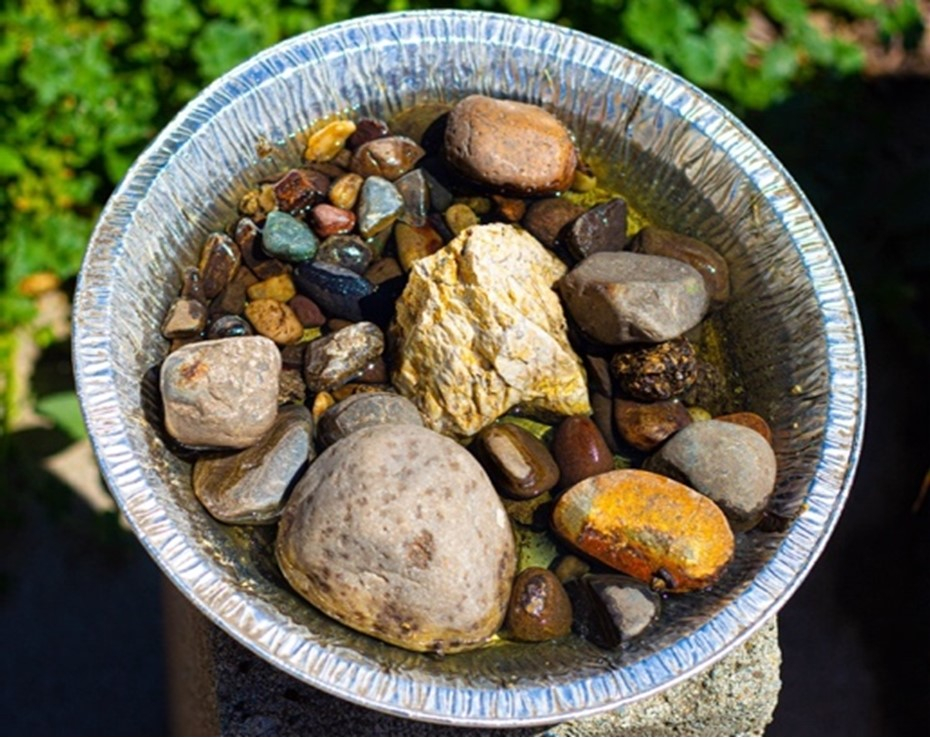As a child I personally hated bees,especially when they were buzzing around the raspa truck. As a reasonably educated adult I love bees and everything they can provide. Whether that be beeswax, honey, or royal jelly. However, today we will be focusing on an important job all bees and fellow wild friends provide, Pollination! Pollination is essential to our everyday lives from the food that you eat to the soap in your bathroom, yet we hardly give credit where credit is due.
Before we dive in on their importance let’s first define and understand what a pollinator is. According to the National Park Service a pollinator is anything that helps carry pollen from the male part of the flower to the female part of the same or another flower. In other words, a pollinator assists in the reproduction of flowers and plants. The state of New Mexico is home to a variety of pollinators. They range from monarch butterflies to bats. There’s a variety of native pollinators. These pollinators take different shifts during the day for maximum efficiency. During the day you may see bees or other winged creatures buzzing and flying around flowers and other native plants. During the night our other nocturnal friends take their shifts.
As reported by U.S. Department of Agriculture about 35% of the world’s food crops depend on pollinators to reproduce. Therefore, by statistics at least one section of your meal got to your mouth with the help of pollinators. Additionally in the USDA added that pollinators add approximately $18 billion in revenue to crop production every year (Keel, 2022). The infographic above, provided by Xerces society, provides a visual aid for all the assistance pollinators give both economically and aesthetically.
Sadly, the two dear pollinators mentioned above, bees and bats, are slowly fading away. They have extreme difficulty surviving in today’s human activities and modern world and need our help to keep from going farther into endangerment. Both bees and bats habitats are declining due to urbanization, this results in a lack of food with more competition. Caves that were once homes to colonies of bats are being closed for safety hazards to humans. If bees alone were to go extinct our food supply would greatly decline. It is our job as a society to aid in not only the population of bees but all pollinators; without their role in our lives the stability of human populations would hang in the balance.
There are many options to help our pollinating friends. As stated previously bats are having trouble finding shelter. A great way you can make a difference is by either buying or making a bat box to set up in your backyard. Setting up a bat box would not only give them shelter but would also provide a feeding ground. Bats are great tenants for your yard as they assist in pest control. If you’re looking to purchase a bat box a great company to look at would be BatBNB. They ship right to your door and have additional information about what a bat box can provide for our nocturnal friends.
A good DIY option is to create bee water drinking stations in your backyard. Often times bees drown from desperately trying to drink water or dehydrate from lack of water. One method I use in my own yard in filling a shallow bowl with water then placing marbles just above to water’s surface inside. An effective, cheap alternative to marbles is rocks, however, if the rocks are not thin you will need to fill the water a bit higher as pictured here. It gives the bees a safe place to land and replenish while they’re hard at work pollinating.
Additionally, you can plant native species that attract pollinators and are also adapted to New Mexico’s unique environment. These plants are best suited for small areas with dry soil. These plants not only attract native bees and butterflies; they also attract nectar seeking wildlife such as hummingbirds. The plants that Xerces society recommends for the Albuquerque and Santa Fe Region include Chocolate flowers, horsetail milkweed, gayfeather, desert willow, crispleaf buckwheat and many more. You can find the full list on the Xerces Society Website.
In the city of Albuquerque, you can get your own yard certified through ABQ Backyard Refuge to make your own space a “wild habitat in an urban place. They provide helpful plant lists, getting started guides, and many other resources to ensure your yard is not only pollinator friendly but New Mexico adapted.
-Posted by Ava





